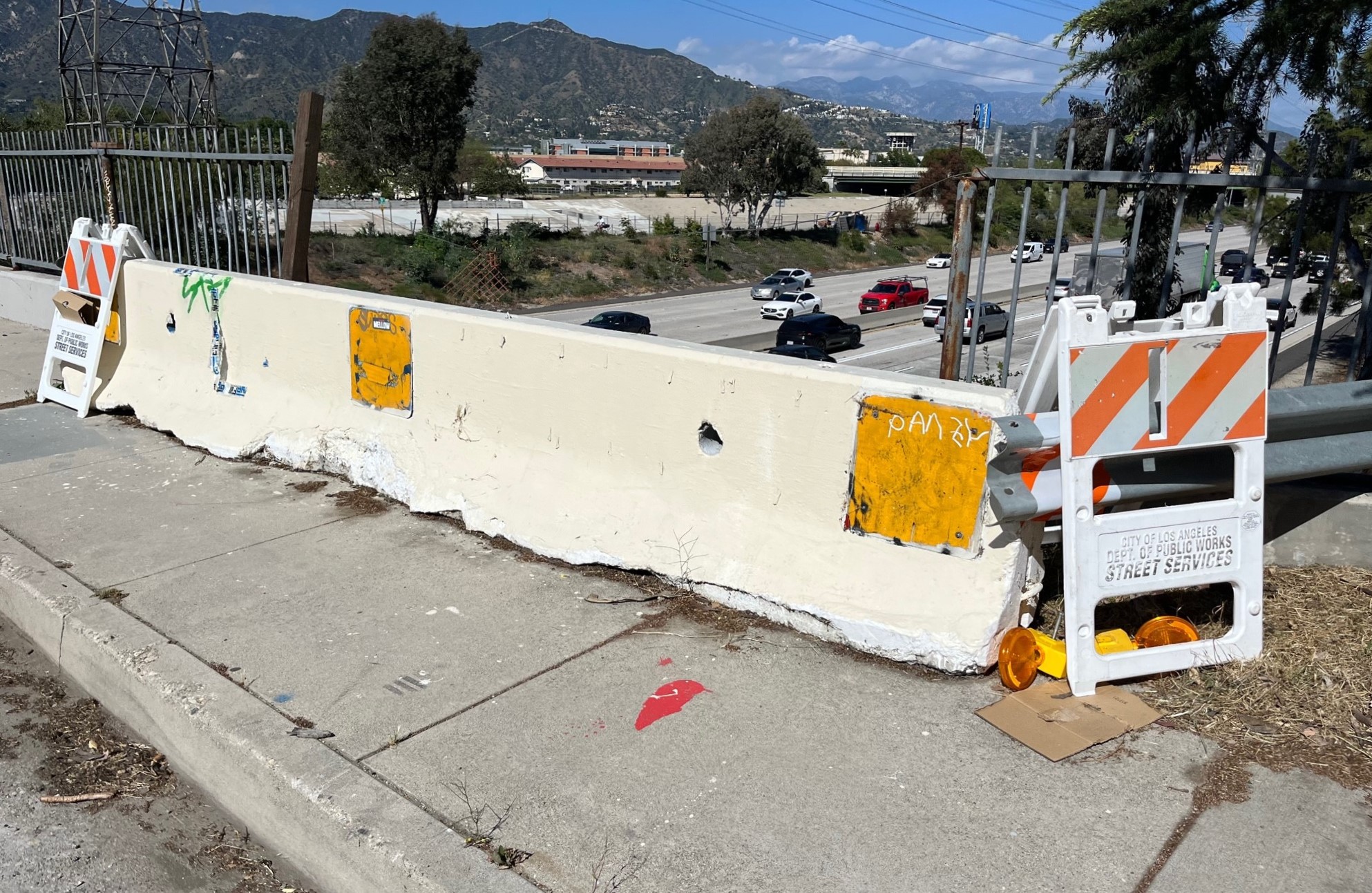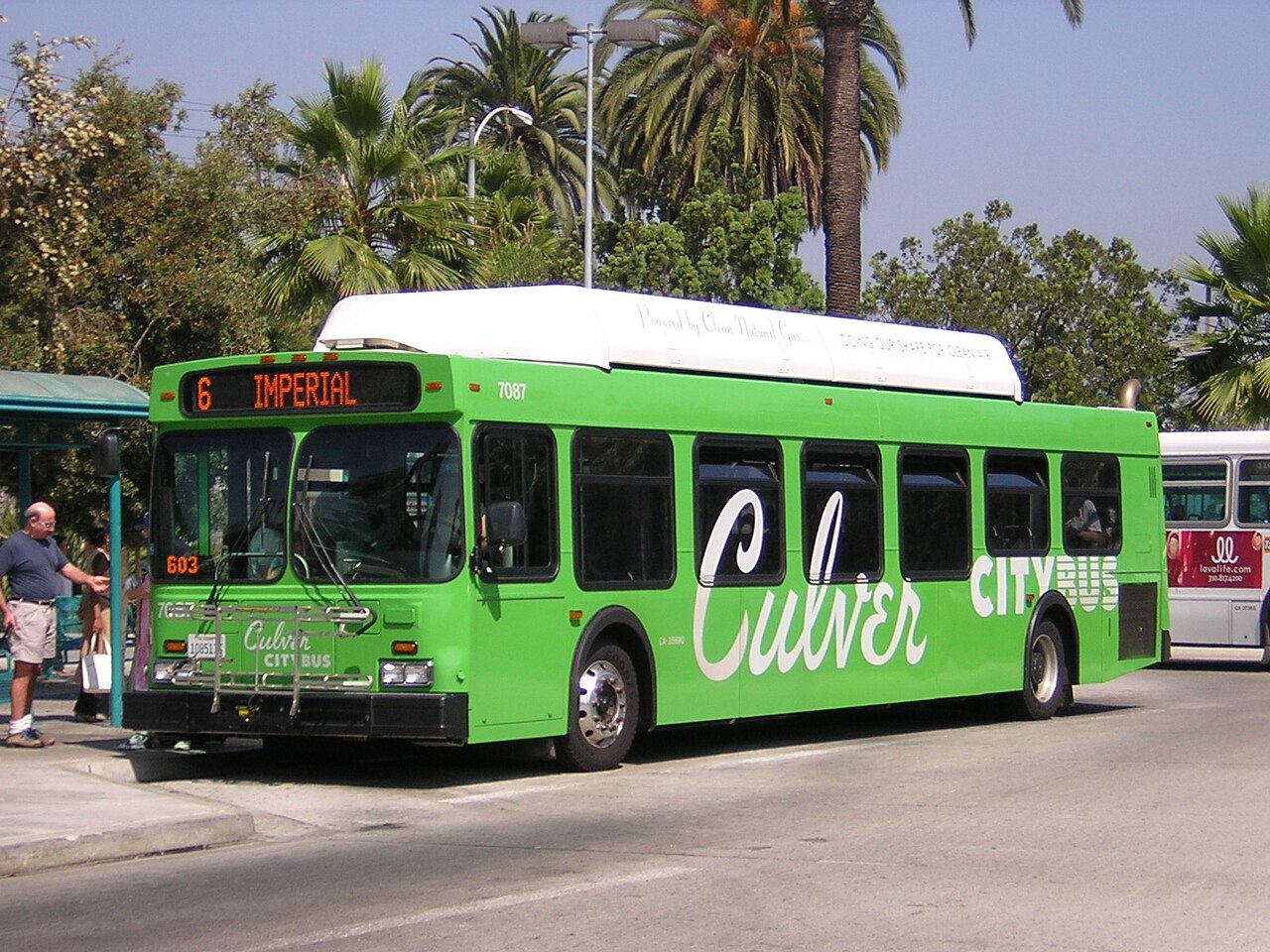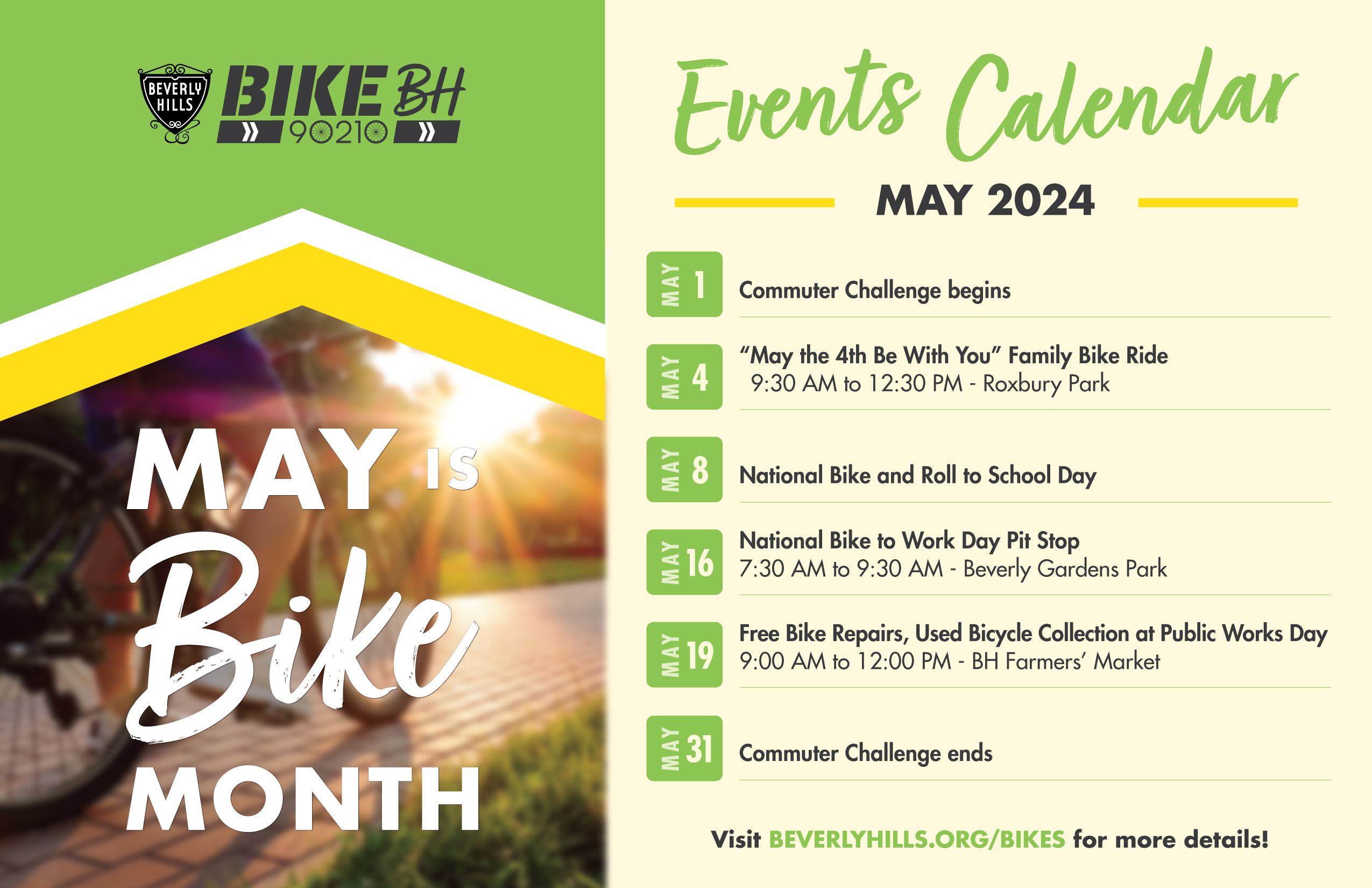Metro Committee to Adopt Mariachi Plaza Development Guidelines Wednesday
6:18 PM PST on January 17, 2017
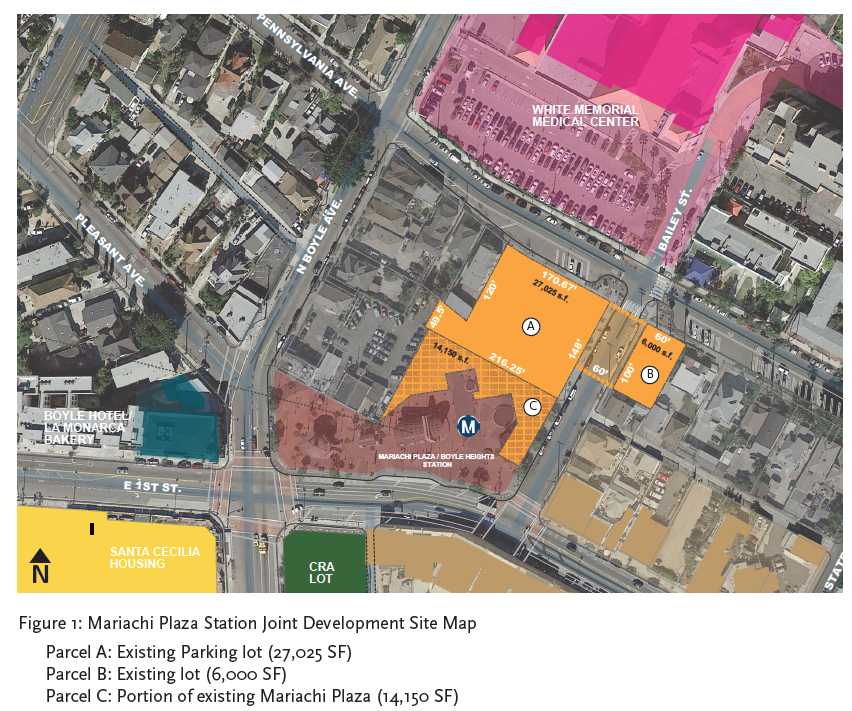
The Mariachi Plaza lots (at center, in orange) and some of the surrounding area. Depending on how the lots are developed, the section of Bailey Street between the two lots could be incorporated into the project as a pedestrian plaza. Source: Development Guidelines, Metro/Gwynne Pugh Urban Studio/Perkins + Will/DakeLuna
This Wednesday, Metro's Planning and Programming Committee will vote on whether to approve the development guidelines for the lots at Mariachi Plaza that Metro would send to potential bidders as part of the Request for Proposals (RFP) process.
The 53-page set of guidelines that will accompany the RFP are the result of design charrettes and discussions Metro, Gwynne Pugh Urban Studio, DakeLuna, and Perkins + Will held with the community last year (write-ups here and here). The published guidelines spell out the community context for potential developers as well as urgent needs within the community, and ask that developers be faithful to those guidelines while planning with the best possible project for the site. [The full set of guidelines is downloadable here (see the link for "Attachment C")]
At the charrettes held last spring, residents made clear that housing was a top priority. And not just standard affordable housing, but units that would be accessible to the sizable percentage of the Boyle Heights population that earns less than $24,000 a year. The minimum income required to access units serving those earning between 30 and 60 or 80 percent of the Area Median Income, they feared, would bar access for too many of those needy residents.
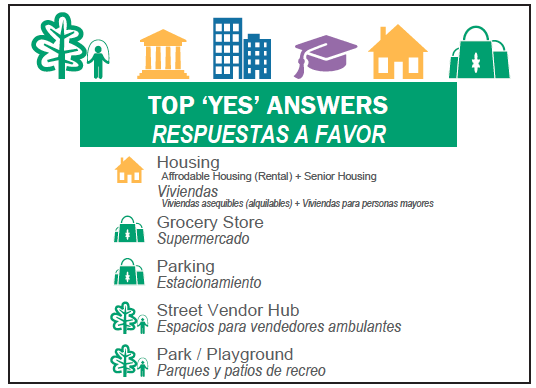
Other community asks included that culture of the area be honored via public art (murals, in keeping with the area's artistic traditions), a resource space for mariachis, green space that welcomed multi-generational families, community meeting spaces, public restrooms, local (rather than chain) retailers that served community needs and income levels, parking, and space for street vendors.
Above all, residents were adamant, the project should be geared toward serving the needs of the long-standing culture and community, not those of the higher-income renters that are starting to drift eastward from downtown.
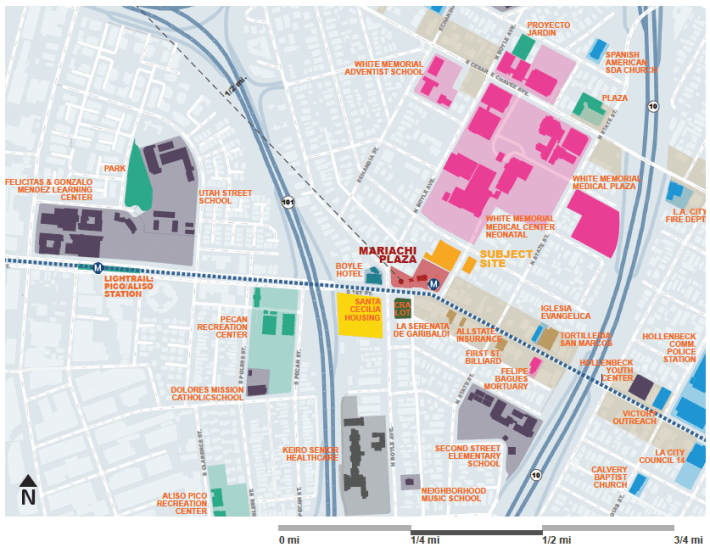
Metro's guidelines seem to adhere closely to those demands, asking bidders to plan for "a mixed-use development with a focus on affordable housing which integrates commercial and retail development on the ground floor, creates usable public open space with enhanced landscape and hardscape elements, provides additional public parking, maintains the presence and viability of the mariachis, and preserves the iconic symbolism of the Plaza."
The guidelines make it clear that housing is one of the most urgent needs, both because of the high levels of rentership in the community (73 percent) and the low vacancy rate - just 3.6 percent (compared to the county average of 4.1 percent). The guidelines also advise developers to not feel beholden to the current zoning governing the Mariachi Plaza parcels (RD1.5-1-RIO-CUGU), which limits the number of potential units constructed to 22 (29, if adding in the maximum density bonus) by requiring housing units to be a minimum of 1,500 square feet. Metro's objective is to see as many as 60 affordable units built on those parcels, and it is working with City Planning to increase the density options at transit nodes like Mariachi Plaza.
That said, the guidelines state, zoning will likely render the grocery store the community asked for infeasible at that site. Cognizant of the need for healthy options (and the fact the community still resents the razing of the existing grocery in order to create a staging area for construction of the Gold Line), however, Metro notes it intends to see a market included in the Cesar Chavez/Fickett development. Taking the requirement of a market off the table leaves bidders more room to plan for how to incorporate community-serving retail, enhance open space areas and possibly create a small, shady park (top rendering, below), embrace street vendor culture, and preserve the artistic character of the neighborhood by incorporating opportunities for public art, performances, and possibly even a museum or arts education facility.
The building heights would range between one and five stories, and bidders are asked to use landscaping and other creative design methods to make the connection between any structures and the plaza's open spaces seamless, dynamic, and inviting to multigenerational families.
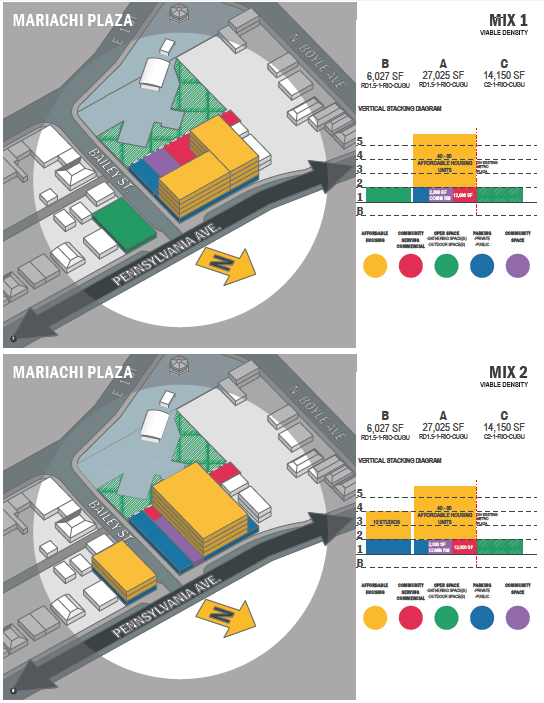
The development guidelines were approved by the Boyle Heights Neighborhood Council and the Design Review Advisory Committee (comprised of Boyle Heights stakeholders) in December. Once approved by the Planning and Programming Committee, the guidelines will go before the full Metro Board on January 26. The RFP will then be sent out to potential bidders in February.
The transparency of this process marks a significant improvement over Metro's previous attempt to find a developer for the lots, as residents will no doubt recall.
Poorly managed outreach regarding the future of Mariachi Plaza and several Metro-owned lots in Boyle Heights at the end of 2012 and beginning of 2013 meant that Metro didn't get a lot of viable feedback on how to handle development at Mariachi Plaza. And despite promises that staff would update the community regarding the development guidelines for lots at Mariachi Plaza, 1st & Soto, 1st & Lorena, and Chavez & Soto prior to seeking Metro Board approval, no such notice was ever given - either to the community or to the advisory committee for the Eastside Access project.
Instead, in early 2013, Metro approved rather generic development guidelines [found here] oriented toward promoting transit use, enhancing and maintaining the existing residential neighborhood, creating a sense of place, providing a secure environment, providing spaces for the community to come together, and supporting the goal of the community to make the area a cultural hub.
The guidelines also indicated Metro had done little work to sort out contradictions within community feedback to understand where the community was coming from or how to balance the feedback against actual needs. Four of the ten comments Metro listed as "not specific to the property" included "affordable housing" and "no more affordable housing," "street vending uses" and "no street vending uses." Two of the three similarly non-helpful comments on the site noted it was an "active subway portal plaza" and that there were "Mariachi musicians on plaza."
It was probably no real surprise, then, that Metro gravitated toward Primestor Development's plan to glitz up the plaza with a fitness club, medical offices, floors and floors of parking, a new grassy knoll that had lots of white people picnicking on it, and a new name: Plaza del Mariachi.
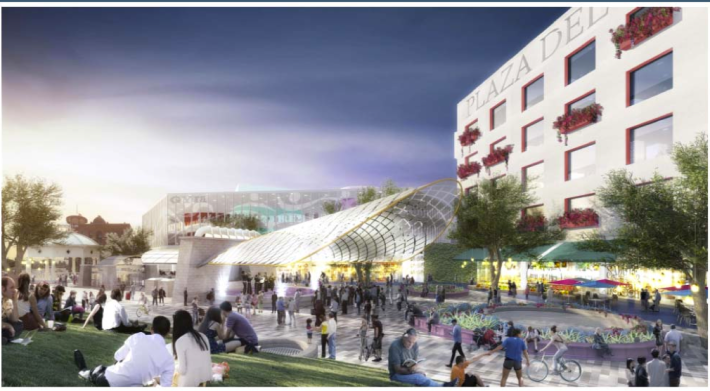
Nor was it a real surprise to the community that Metro tried to push the project through the approval process as quickly and as under-the-radar as possible, planning to ask the Board to allow Metro to enter into an 18-month Exclusive Negotiation Agreement and Planning Document (ENA) with Primestor within a few weeks of having selected their project. And without any real effort to let the community know what was in the works.
The uproar against the project and fears that Metro was trying to erase both the people and the culture from the face of Boyle Heights was so deafening that, last January, Metro agreed to start the process over from scratch. Moreover, they listened to area youth who asked that Metro extend the ENAs offered to affordable housing developers on other Metro-owned lots to allow more time for community engagement.
It is still not a perfect process, and residents concerned about displacement are still suspicious of Metro's intentions.
Promises that the opening of the Gold Line would aid local businesses and make connectivity easier for residents failed to materialize, while the loss of the grocery, the years of construction limiting access to the street, and the yanking out of 90-odd trees as part of the Eastside Access project helped drain life from the once-vibrant street.
Instead, the Gold Line has pushed rents up along commercial corridors and helped feed the renovation of older units to make way for a well-heeled clientele seeking convenient commutes to downtown from an "up-and-coming" neighborhood. It's a reality that makes Metro's efforts - however well-intended - feel like too little, too late for many.
Find the materials for tomorrow's Planning and Programming Committee meeting here.
For previous coverage on Metro developments along the Gold Line and First Street corridor in Boyle Heights, see below.
- March, 2016: Residents Debate Priorities for Mariachi Plaza at Second Design Workshop
- March, 2016: Planning for Mariachi Plaza Begins Again; How it Will Tie in to Other Area Projects Remains Unclear
- August, 2015: Privileging Form (and Speedy Implementation) over Function Yields Semi-Obsolete Street Furniture in Boyle Heights
- March, 2015: Boyle Heights Youth Research Community Challenges, Find Proposed TOD Solutions Don’t Go Far Enough to Help Neediest
- January, 2015: Youth Rise Above Heckling to Win Concession for Community on Metro Projects at Neighborhood Council Meeting
- January, 2015: Finally Given a Platform, Boyle Heights Speaks Out on Metro’s Mariachi Plaza and Affordable Housing Plans
- October, 2015: Boyle Heights to See Improvements in Phase Two of the Eastside Access Project
- December, 2015: Metro Moves Affordable Housing Projects in Boyle Heights Forward, Returns Grocery Store Project to Drawing Board
- November, 2014: Metro Postpones Approving ENA for Mariachi Plaza, Gets Blasted for Having it on Agenda in First Place
- November, 2014: Dupont-Walker, Community Press Metro on Surprising Changes Slated for Mariachi Plaza, Demand More Outreach
- September, 2013: Eastside Access Project Takes Another Step Forward, Experiences Growing Pains
- February, 2013: Developers Introduced at Metro Open House to Reshape Empty Lots
- December, 2012: “Starting from the Beginning” for Some Metro Owned Sites in Boyle Heights
- December, 2012: Boyle Heights Community, Metro Clash at Meeting Over Development at MTA Owned Property
Sahra is Communities Editor for Streetsblog L.A., covering the intersection of mobility with race, class, history, representation, policing, housing, health, culture, community, and access to the public space in Boyle Heights and South Central Los Angeles.
Stay in touch
Sign up for our free newsletter
More from Streetsblog Los Angeles
LAPD Was Crossing Against Red Light in Crash that Killed Pedestrian and Injured Six in Hollywood
The department says the officers had turned on their lights and sirens just before crossing. Their reasons for doing so remain unknown.
Freeway Drivers Keep Slamming into Bridge Railing in Griffith Park
Drivers keep smashing the Riverside Drive Bridge railing - plus a few other Griffith Park bike/walk updates
This Week In Livable Streets
Bike Month, Hyperion street safety, Eastside rail plans, Pasadena transit, CicloIRVINE, Culver City bus service, and more


